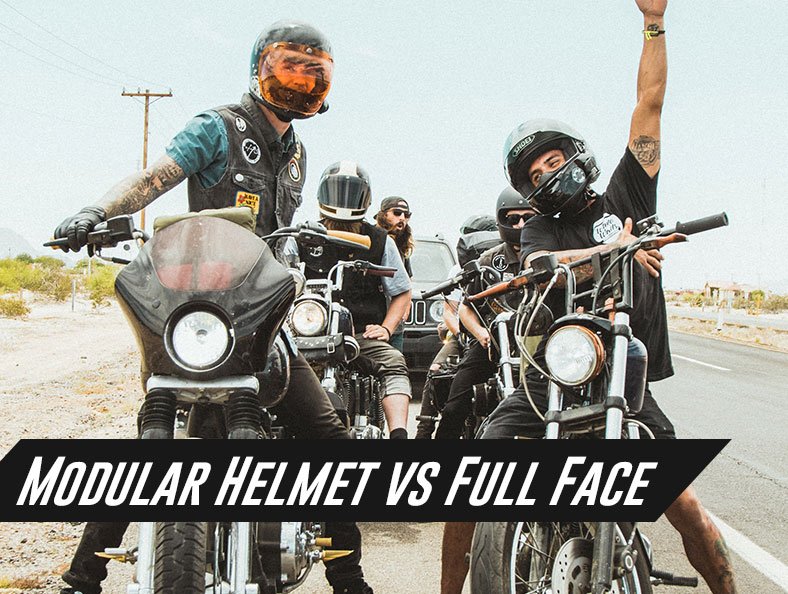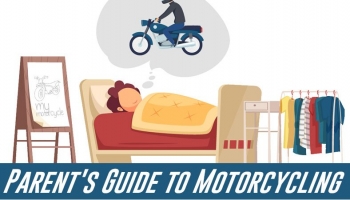Full Face vs. Modular Helmets – Safety and Design Considerations

You’ve probably noticed the many types of helmets on the market. Riders can now choose between open-face, full-face, modular and hybrid models depending on their needs and preferences.
Do you know why modular and full-face are still the most popular? These might appear similar, but they actually have a few key differences.
Either way, your helmet is of crucial importance, so it has to be a quality and reliable piece regardless of the type you choose.
Many people struggle to choose between the two types, so continue reading to learn all about their pros, cons, and overall safety.
Modular – Pros and Cons
Modular helmets are probably the popular ones among the two. It’s because of their design that allows a bit more versatility and convenience for some riders.
These are a combination of open-face and full-face helmets, so they deliver the best of both worlds. The main difference is that these can be flipped up and turned from full-face to open-face in a second.
All the major brands make them so you won’t have any issues in finding a reliable model. You should, however, pay attention to the flip-up mechanism and its quality.

Pros:
Versatility – as we said, these go from full-face to open-face in a second which allows you to use it in two ways. This means you won’t have to take it off each time you’re at the gas station, or you want a light a cigar.
Less fatigue – because it flips up, you can have better airflow in case you’re prone to fatigue. You won’t have to take it off when you park to breathe some fresh air but simply turn it into an open-face model with a single step.
Cons:
Must be used as full-face – though the hinge and locking mechanism allow some versatility and comfort, you’re not supposed to use it as a modular when riding. If the chin bar is in an open position, the hinge is a weak point that might break during impact.
Added weight – these usually weight somewhat more due to the locking mechanism and hinge that allow it to transform. In most cases, it’s nothing too drastic.
Full Face - Pros and Cons
Full-face models cover your entire face. These are tight around all areas, and you must take them off if you want to talk, smoke, smile or have some fresh air.
It’s essential that it has proper ventilation; otherwise, it might fog and be challenging to use. These are ideal for all seasons since they protect against sun, rain, snow, wind and all other elements so you won’t have to wear glasses.

Pros:
Better protection – as we said, these cover your head as well as your entire face, so nothing is exposed. They usually have some tight padding on the inside, so your whole face is well-supported and fitted. The overall design provides more protection to your chin.
Lightweight – full-face models are usually lightweight and aerodynamic which are just two of the reasons why as many riders opt for them. Their shape offers no resilience to wind so you’ll feel like you’re gliding with ease. Plus, the weight makes it easy to wear for hours.
Cons:
Possible fogging – there’s nothing more critical for a full-face model than its ventilation. Because the style is so enclosed, you’ll definitely experience fogging if the airflow inside isn’t at a satisfactory level. Bad airflow can also cause fatigue and make it hard to use the helmet. Look for as many vents and make sure you can control them for some added convenience.
Claustrophobia – it might take a while to get used to it, especially if you had an open-face helmet before. The tight fit and enclosed design might make you feel claustrophobic and panicky.
Safety
For starters, it’s important that your helmet is of quality and durable materials. Though both of these types protect your face and head, full-face models are considered safer.
Get more info on Safety Ratings.
It’s because they’re made as one piece, so there are no moving parts like you have with modular ones. They also cover more of your face, jaw and chin included.
Still, it all depends on the rider because a full-face helmet might not be the safer of the two if you’re claustrophobic. The enclosed design is safe and reliable, but if you’re feeling trapped, you’ll probably not feel as secure to begin with.
As we mentioned, you have to keep the flip-up down when riding with a modular helmet. The design is created to provide more comfort when you’re parked for whatever reason. If you do want to ride with it flipped up, look for a helmet with the ECE22.05 label with a J and P in the serial number.
Comfort
Though it has to be durable, your helmet also has to be comfortable otherwise you’ll hate wearing it. Full-face models usually feel very cumbersome and don’t provide as much fresh air as their modular counterparts.
It’s nearly impossible to have a conversation in these, at least not an easy one everyone will understand. Other than that, they’re pretty comfortable. Modern designs have excellent ventilation and even some space for speakers.
Still, modular models are far more comfortable thanks to the flip-up design. It’s easier to have some fresh air and talk to your friends and companions. You probably won’t feel the need to take it off as often as you would a full-face helmet.
Both of these types should have removable liners and cheek pads. Make sure they’re lightweight and providing support to your head and neck.
Conclusion
As you can tell, some give where others take and vice versa. What’s important is that you pick durable materials and solid construction. It’s also crucial to look for safety certifications.
Full-face and modular helmets have each their pros and cons. They deliver different performance, but they’re both safe and comfortable.
Choosing one out of these two would be entirely up to you and your preferences. Think about what each type offers and what it lacks so you can figure out what works the best for you.






